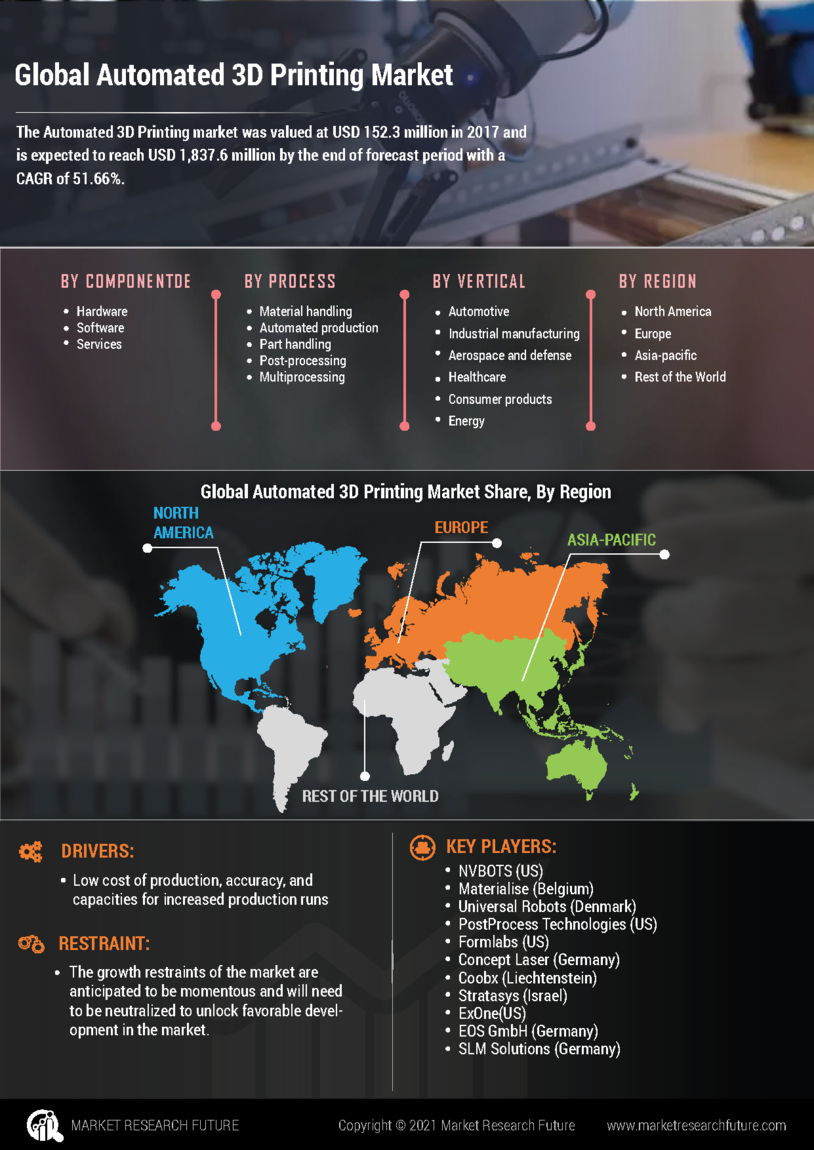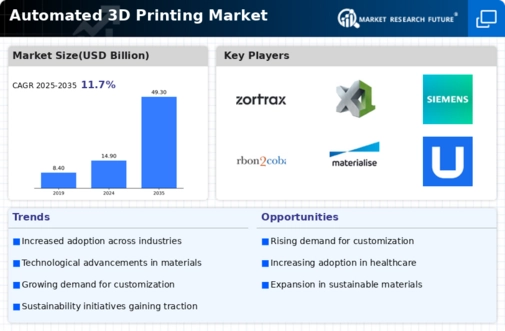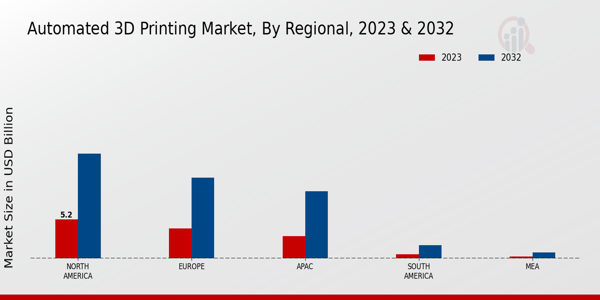Cost Efficiency
Cost efficiency is a pivotal driver of the Global Automated 3D Printing Market Industry, as businesses seek to reduce production costs while maintaining quality. 3D printing allows for the production of complex parts without the need for expensive tooling, thus lowering overall manufacturing expenses. Furthermore, the ability to produce on-demand reduces inventory costs and waste, making it an attractive option for manufacturers. For instance, companies are increasingly adopting 3D printing for low-volume production runs, which can significantly cut costs compared to traditional manufacturing methods. This focus on cost efficiency is expected to sustain the market's growth trajectory in the coming years.
Market Growth Projections
The Global Automated 3D Printing Market Industry is projected to experience substantial growth, with estimates indicating a market value of 14.9 USD Billion in 2024 and a remarkable increase to 49.3 USD Billion by 2035. This growth trajectory reflects a compound annual growth rate (CAGR) of 11.5% from 2025 to 2035. Such projections underscore the increasing adoption of 3D printing technologies across various sectors, driven by factors such as technological advancements, customization demands, and sustainability initiatives. The market's expansion is indicative of the transformative potential of automated 3D printing in reshaping manufacturing and production processes globally.
Sustainability Initiatives
Sustainability initiatives are becoming integral to the Global Automated 3D Printing Market Industry, as companies strive to reduce their environmental footprint. 3D printing technologies enable the use of recycled materials and minimize waste during production, aligning with global sustainability goals. Industries are increasingly adopting additive manufacturing processes that consume less energy and raw materials compared to traditional subtractive methods. For example, some manufacturers are utilizing bio-based materials in their 3D printing processes, further enhancing sustainability. This growing emphasis on eco-friendly practices is likely to bolster market growth, as consumers and businesses alike prioritize sustainability in their purchasing decisions.
Technological Advancements
The Global Automated 3D Printing Market Industry is witnessing rapid technological advancements that enhance printing speed, precision, and material diversity. Innovations such as multi-material printing and improved software algorithms are enabling manufacturers to create complex geometries that were previously unattainable. For instance, advancements in metal 3D printing technologies allow for the production of lightweight yet strong components, which are particularly beneficial in aerospace and automotive sectors. As these technologies continue to evolve, they are expected to drive the market's growth, contributing to an estimated market value of 14.9 USD Billion in 2024.
Customization and Personalization
The Global Automated 3D Printing Market Industry is characterized by a rising demand for customization and personalization in products. Consumers increasingly seek tailored solutions that meet their specific needs, which 3D printing can efficiently provide. This capability is particularly evident in sectors such as healthcare, where personalized implants and prosthetics are produced to fit individual patients. Additionally, the fashion industry is exploring 3D printing to create unique designs that cater to niche markets. As this trend continues, it is likely to propel the market towards a projected value of 49.3 USD Billion by 2035, highlighting the importance of customization in driving market growth.
Increased Adoption in Manufacturing
The Global Automated 3D Printing Market Industry is increasingly being adopted in various manufacturing sectors due to its ability to streamline production processes. Industries such as aerospace, automotive, and healthcare are leveraging 3D printing for rapid prototyping and production of customized parts. This shift not only reduces lead times but also minimizes waste, aligning with sustainability goals. For example, companies are using 3D printing to produce lightweight components that enhance fuel efficiency in vehicles. This trend is projected to contribute to a market growth rate of 11.5% CAGR from 2025 to 2035, reflecting the growing reliance on automated 3D printing technologies.












